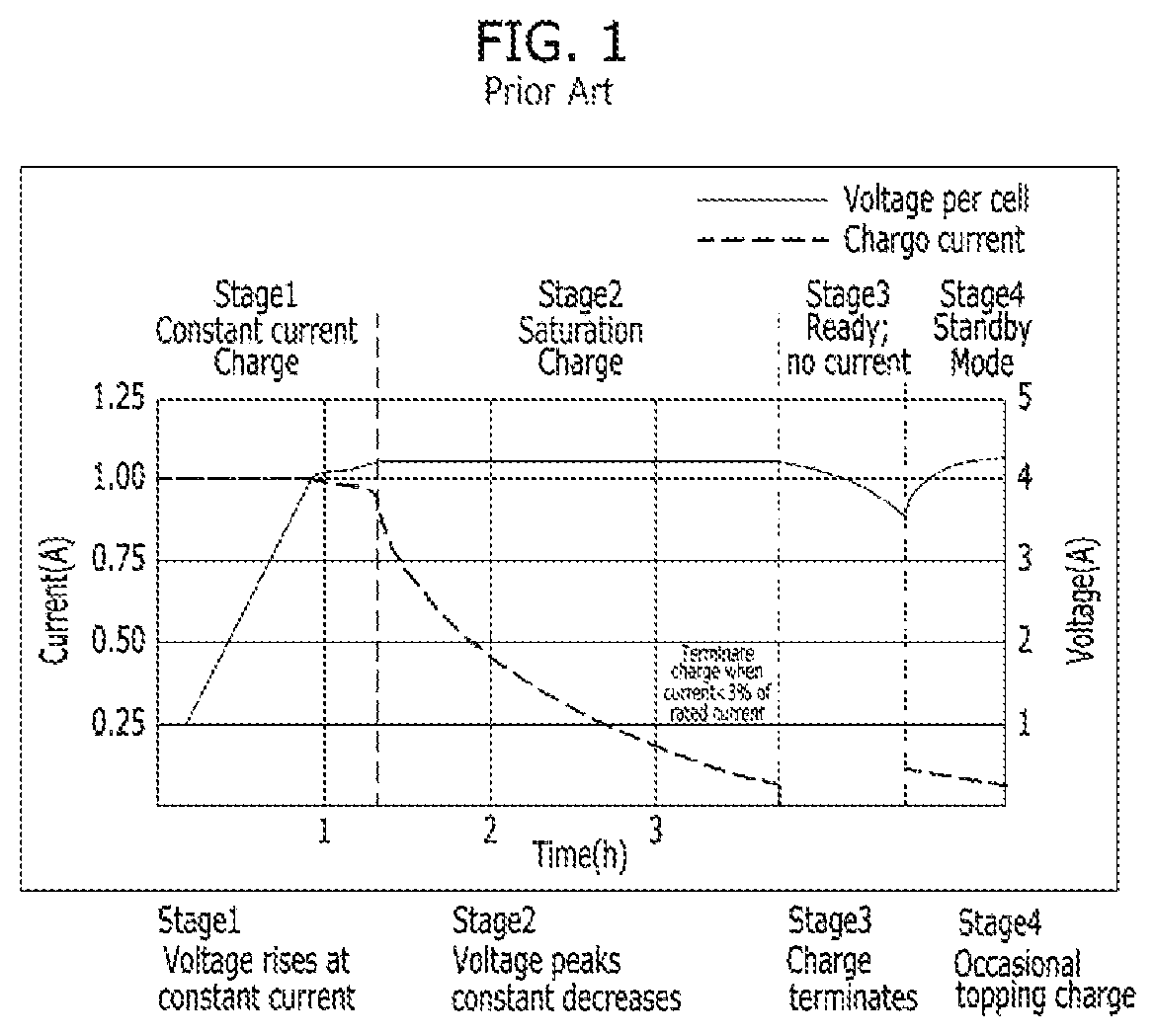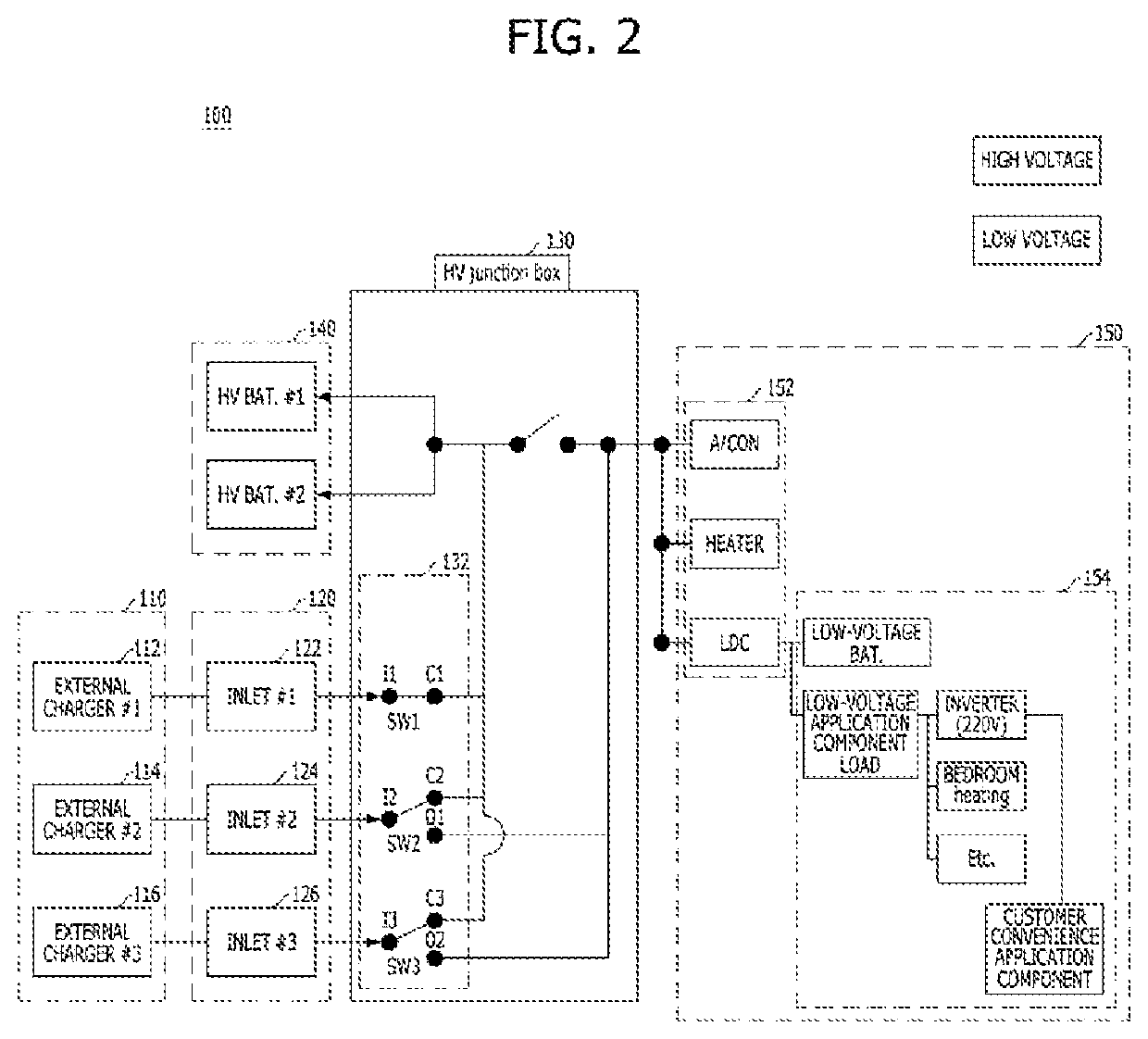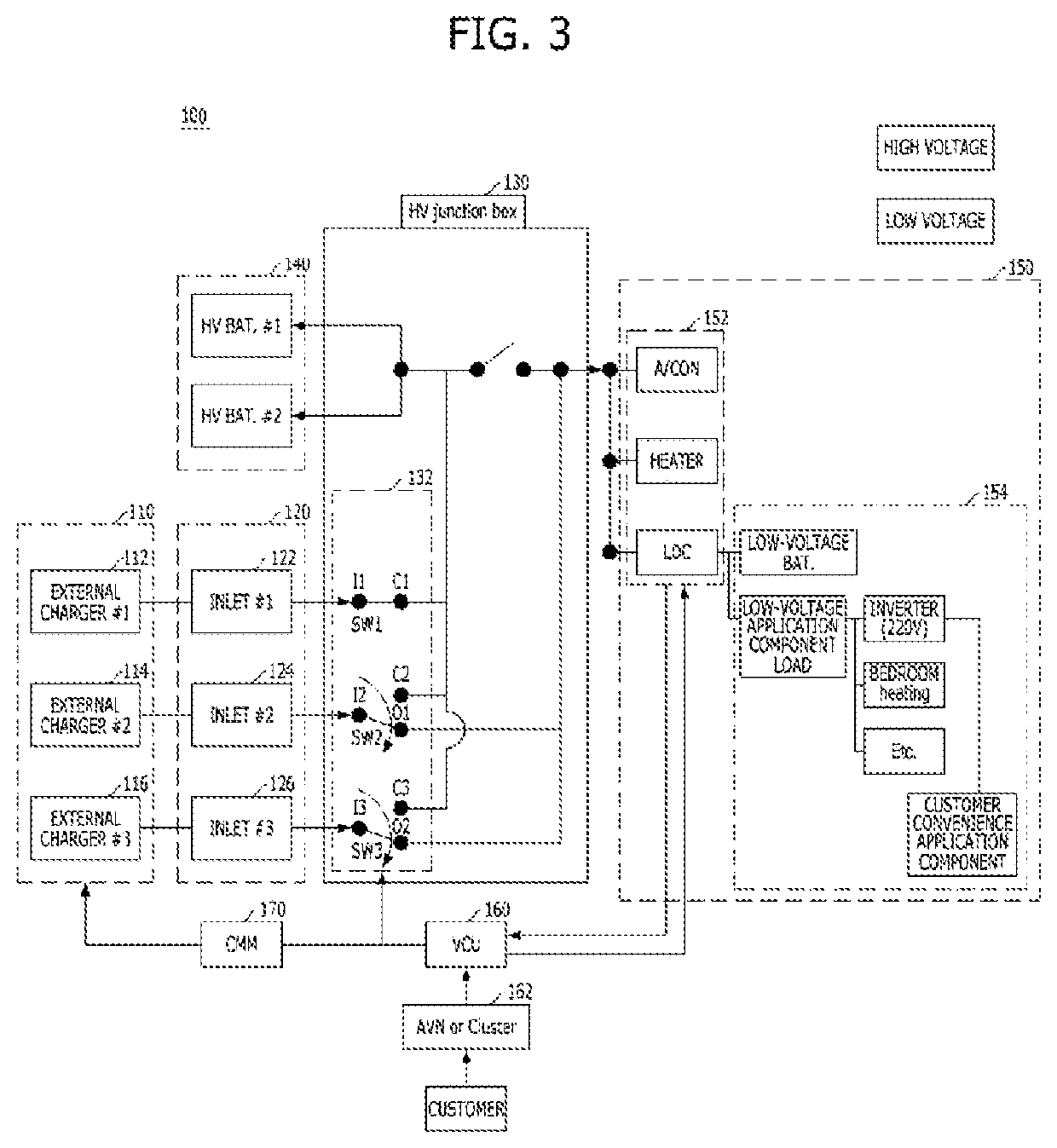Method for charging electric vehicles
a charging method and electric vehicle technology, applied in the direction of charging stations, battery/fuel cell control arrangements, transportation and packaging, etc., can solve the problems of increasing the time required to complete charging, and achieve the effects of improving charging efficiency, improving customer convenience, and improving charging efficiency
- Summary
- Abstract
- Description
- Claims
- Application Information
AI Technical Summary
Benefits of technology
Problems solved by technology
Method used
Image
Examples
first embodiment
[0047]FIG. 2 illustrates a vehicle according to the present disclosure.
[0048]Referring to FIG. 2, two or more inlets may be used to charge a high-voltage battery unit according to the first embodiment.
[0049]A vehicle 100 may include an external charger 110, inlets 120, a high-voltage junction box 130, a high-voltage battery unit 140 and an application component 150. Hereinafter, the high-voltage junction box 130 is referred to as a “junction box 130”.
[0050]The vehicle 100 may include a plurality of external chargers 110. The plurality of external charges 110 may be respectively connected to a plurality of inlets 120.
[0051]For example, a first external charger 112 may be connected to a first inlet 122. Then, the first external charger 112 can provide a charging voltage and current to the junction box 130 through the first inlet 122.
[0052]A second external charger 114 may be connected to a second inlet 124. Then, the second external charger 114 can provide a charging voltage and curre...
second embodiment
[0061]FIG. 3 illustrates a vehicle 100 according to the present disclosure.
[0062]The second embodiment illustrates a circuit where two or more inlets change to one inlet 120. In this embodiment, power supplied through the first inlet 122 may be used to charge the high-voltage battery unit 140. Power supplied through the second and third inlets may be used as available power.
[0063]Referring to FIG. 3, the vehicle 100 may include the external charger 110, the inlets 120, the junction box 130, the high-voltage battery unit 140, the application component 150, a vehicle control unit (VCU) 160, and a chassis management module (CMM) 170. The CMM 170 may be a first controller for a method of charging electric vehicles. The VCU may be a second controller for the method of charging electric vehicles.
[0064]The VCU 160 may receive the charge amount of the high-voltage battery unit 140. When the charge amount of the high-voltage battery unit 140 reaches a saturation level, the charging speed and...
third embodiment
[0090]FIG. 5 is a vehicle according to the present disclosure.
[0091]Referring to FIG. 5, the third embodiment illustrates a circuit where two or more inlets 120 switch to one inlet 120. In this embodiment, the first inlet 122 may be used to charge the high-voltage battery unit 140. The second inlet 124 and the third inlet 126 may be used to operate an application component with priority using available power.
[0092]Referring to FIG. 5, the vehicle 100 may include the external charger 110, the inlets120, the junction box 130, the high-voltage battery unit 140, the application component 150, the vehicle control unit (VCU) 160, and the chassis management module (CMM) 170.
[0093]The VCU 160 may switch two or more inlets 120 to one inlet based on charging characteristics such as charging current, charging speed and a time required to complete charging according to the charge amount of the high-voltage battery unit 140 and a prestored lookup table.
[0094]In addition, when charging efficiency...
PUM
 Login to View More
Login to View More Abstract
Description
Claims
Application Information
 Login to View More
Login to View More - R&D
- Intellectual Property
- Life Sciences
- Materials
- Tech Scout
- Unparalleled Data Quality
- Higher Quality Content
- 60% Fewer Hallucinations
Browse by: Latest US Patents, China's latest patents, Technical Efficacy Thesaurus, Application Domain, Technology Topic, Popular Technical Reports.
© 2025 PatSnap. All rights reserved.Legal|Privacy policy|Modern Slavery Act Transparency Statement|Sitemap|About US| Contact US: help@patsnap.com



